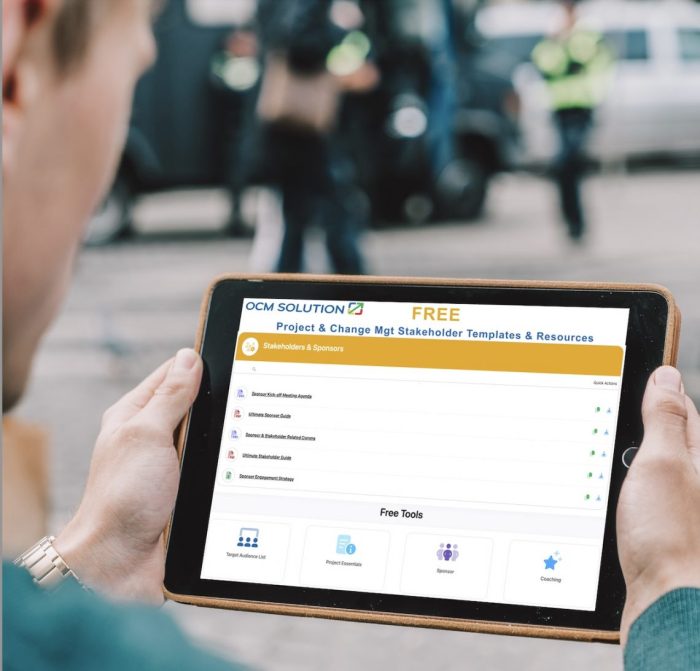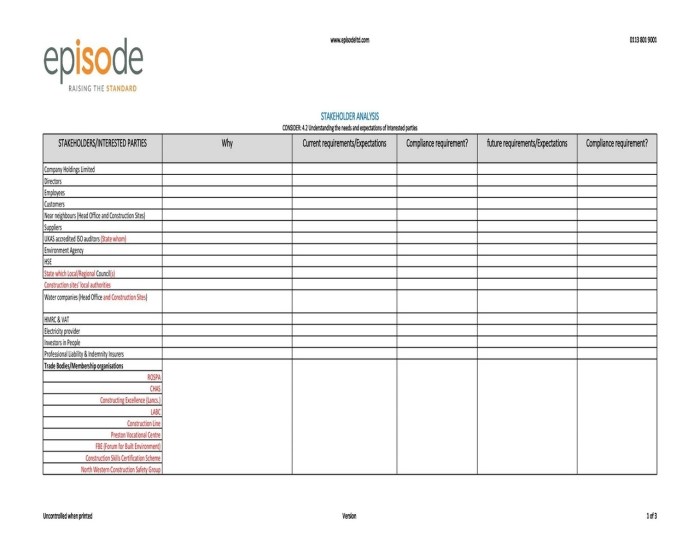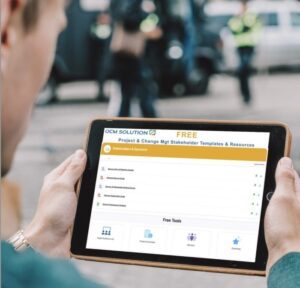
Stakeholder analysis tools are essential in navigating the complexities of business relationships. These tools help organizations identify, assess, and engage with stakeholders effectively, ensuring that their needs and expectations are met. By leveraging such tools, businesses can enhance their communication strategies, streamline decision-making, and ultimately drive project success.
From mapping stakeholder interests to analyzing their influence, these tools come in various forms, catering to different business needs. Understanding how to utilize them can lead to innovative solutions and improved collaboration, making stakeholder analysis a key component of strategic planning and management.
Introduction to Stakeholder Analysis Tools
Stakeholder analysis tools are essential instruments in the realm of business, enabling organizations to identify, analyze, and manage the interests of all parties involved in a project. These tools are particularly significant as they facilitate effective communication and engagement, which are crucial for project success. By utilizing stakeholder analysis tools, companies can ensure that the needs and expectations of stakeholders are met, leading to improved project outcomes and enhanced relationships.There are several types of tools used for stakeholder analysis, ranging from simple matrices to sophisticated software solutions.
Common tools include the Stakeholder Matrix, Power/Interest Grid, and various project management software that incorporate stakeholder analysis features. Effective stakeholder management can significantly influence project success; when stakeholders feel valued and heard, they are more likely to support the project, contributing to a positive outcome.
Key Features of Stakeholder Analysis Tools
When selecting a stakeholder analysis tool, organizations should look for several essential features that enhance effectiveness. These features can greatly improve stakeholder engagement and communication. Here are some key characteristics to consider:
- User-friendly interface: A straightforward design ensures that users can easily navigate the tool without extensive training.
- Customizable templates: Flexibility in templates allows organizations to tailor the tool to their specific needs and project requirements.
- Data visualization capabilities: The ability to present data in visual formats helps stakeholders understand their importance and influence.
- Collaboration features: Tools that allow multiple users to collaborate can foster better communication and collective decision-making.
- Reporting functionalities: Comprehensive reporting options can provide insights into stakeholder engagement and project progress.
These features not only enhance stakeholder engagement but also streamline communication, making it easier for organizations to keep all parties informed and involved. When comparing different tools, organizations should consider their functionalities and user-friendliness to find the best fit for their needs.
Business Innovation and Stakeholder Analysis

Stakeholder analysis tools play a vital role in fostering business innovation by helping companies identify and align their strategies with stakeholder interests. These tools enable organizations to gather insights that can lead to innovative opportunities and solutions. Companies such as Apple and Google have successfully utilized stakeholder analysis to explore new product ideas and improve existing services. By understanding stakeholder needs, these companies can innovate in ways that resonate with their audience.Furthermore, aligning stakeholder interests with innovative strategies can create a synergy that propels business growth.
For instance, engaging customers in the product development process not only enhances satisfaction but also drives innovation, as companies can adapt their offerings based on direct feedback.
International Business Applications
In an increasingly globalized world, the importance of stakeholder analysis in international business contexts cannot be understated. Companies must navigate diverse cultural landscapes, each with unique stakeholder expectations and communication styles. This can present challenges, such as differing values and communication barriers, which require careful consideration and adaptation.Methods for ensuring effective stakeholder communication in global markets include:
- Cultural awareness training: Educating teams about cultural differences enhances sensitivity and improves communication.
- Local stakeholder involvement: Engaging local stakeholders in decision-making processes ensures that regional needs are addressed.
- Utilizing technology: Tools such as video conferencing and collaborative platforms can bridge gaps in communication across geographical boundaries.
By employing these methods, businesses can foster more productive relationships with their international stakeholders, facilitating smoother operations and project implementations.
Conducting Business Interviews with Stakeholders
Preparing for stakeholder interviews is crucial for gathering valuable insights that can inform project decisions. Utilizing stakeholder analysis tools can streamline this process, allowing for a structured approach. Key questions to consider during these interviews include:
- What are your main concerns regarding the project?
- How do you see your interests aligning with the project goals?
- What resources or support do you believe you can provide?
Documenting and analyzing responses effectively is essential for improving stakeholder relationships. Techniques such as using transcription software, summarizing key points, and identifying patterns in feedback can enhance understanding and inform future engagement strategies.
Job Search Techniques for Stakeholder Engagement

For job seekers, identifying potential stakeholders in their desired industry is a strategic advantage. Networking techniques can facilitate connections with key stakeholders, which may include industry leaders, hiring managers, and influencers. Effective strategies include:
- LinkedIn outreach: Connecting with professionals in the field can open doors to valuable discussions and opportunities.
- Attending industry events: Participating in conferences and seminars allows for face-to-face networking.
- Informational interviews: Requesting meetings to learn more about stakeholders’ roles can provide insights and build rapport.
Leveraging these stakeholder relationships in job applications and interviews can significantly enhance a candidate’s appeal, showcasing their proactive approach and understanding of industry dynamics.
Final Thoughts
To wrap up, stakeholder analysis tools are not just resources; they are strategic assets that can significantly enhance business outcomes. By effectively managing stakeholder relationships and integrating their feedback into organizational strategies, companies can foster innovation, improve productivity, and ensure long-term success in an increasingly competitive marketplace.
Expert Answers
What are stakeholder analysis tools?
Stakeholder analysis tools are methodologies or software that help organizations identify, evaluate, and engage stakeholders effectively.
Why is stakeholder analysis important?
It is crucial for understanding stakeholder needs, managing expectations, and ensuring successful project outcomes.
What features should a good stakeholder analysis tool have?
A good tool should include features for mapping, communication, reporting, and analysis of stakeholder data.
How can stakeholder analysis tools enhance communication?
They provide structured frameworks for identifying key messages and ensuring that stakeholders are informed and engaged throughout a project.
Can stakeholder analysis tools be used in small businesses?
Yes, they are beneficial for small businesses as they help in understanding and managing limited stakeholder resources effectively.




